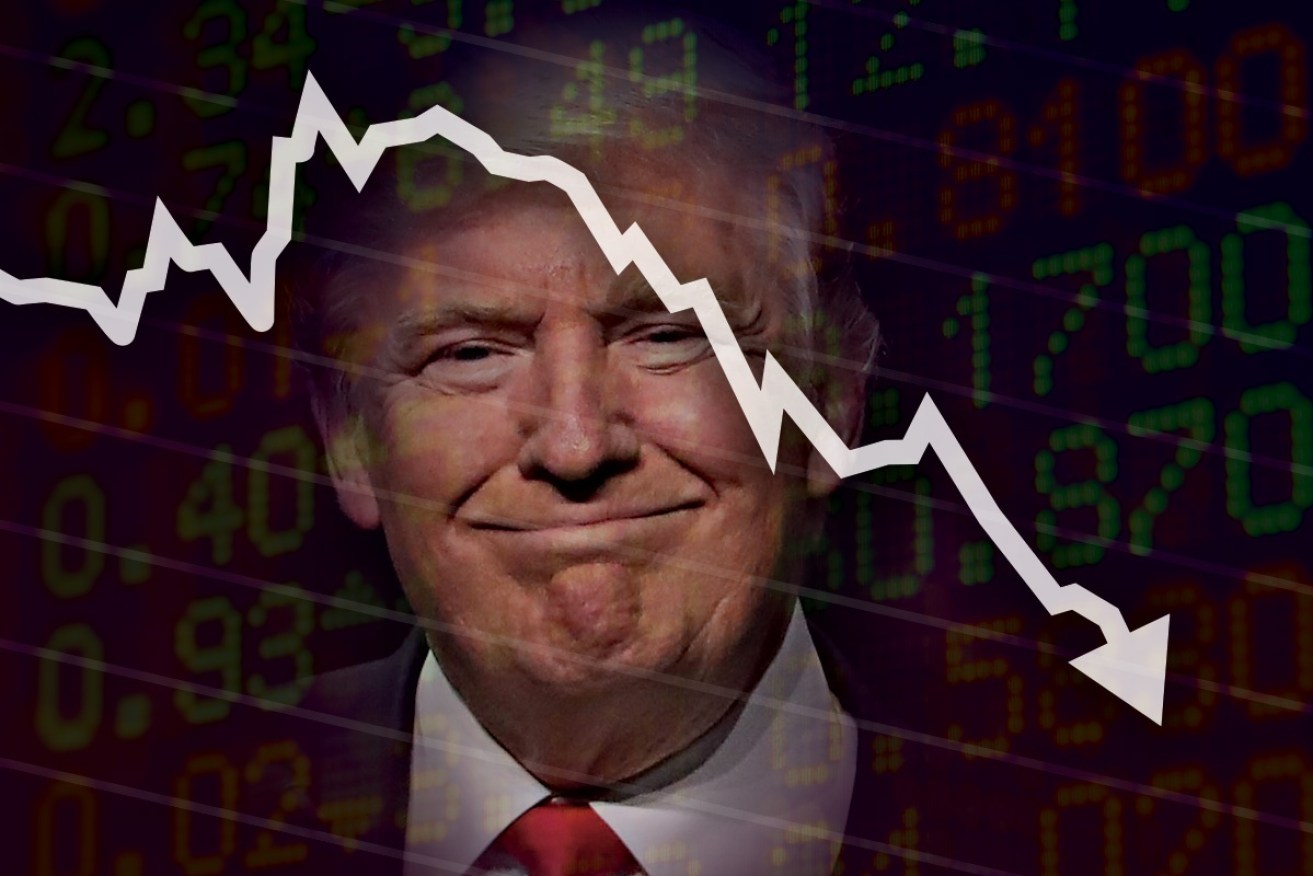China-Trump trade stoush sends Australia’s stock market reeling


The drop in Trump Media's stock price over the past few weeks is hurting its shareholders. Photo: Getty
The escalating trade war between China and the United States has rocked Australia, with the sharemarket falling almost 1 per cent on Tuesday.
Australia’s plunge followed falls on Wall Street after China upped the ante in the tariff stand-off with the US, with Asian stocks also hit hard on Tuesday.
The US’ S&P 500 and the Dow both had their largest percentage drops since January 3, while the Nasdaq lost 3.4 per cent – its biggest one-day percentage loss of 2019.
The carnage came after China announced it would impose higher tariffs on $US60 billion ($86 billion) in US goods, despite President Donald Trump’s warnings not to retaliate against his tariff assault on Chinese imports announced on Friday.
Australia’s benchmark S&P/ASX 200 had fallen 58 points or 0.92 per cent by the close, wiping billions from the value of the market, but had lost as much 1.5 per cent during the day.
Every sector was in the red, with technology, financials and energy the hardest hit, and only 15 per cent of stocks finishing the day higher, according to CommSec.
Among the big losers were National Australia Bank, which fell 4.62 per cent, IOOF Holdings 6.01 per cent lower, Harvey Norman down 3.4 per cent, WiseTech Global falling 2.39 per cent and Origin Energy down 2.15 per cent.
Shares across Asian markets also fell, with Japan’s Nikkei stock index down 1.9 per cent on Tuesday afternoon.
‘A fight to the end’
The trade war between the world’s two biggest economies has rippled around the world, sparking fears of a global economic downturn.
In response to Mr Trump’s beefing-up of tariffs on $US200 billion ($287 billion) of Chinese goods from 10 per cent to 25 per cent, China returned fire by saying it was digging in for a fight “to the end” in the trade war.
Talks between the two countries failed to resolve the trade fight, with Chinese Finance Ministry accusing the raised US tariffs of “leading to the escalation of trade frictions between China and the US”.
Mr Trump last week also told US trade representative Robert Lighthizer to begin imposing tariffs on remaining imports from China – a move that would affect a further $US300 billion ($431.5 billion) of goods and likely sending markets into another tailspin.
China Foreign Ministry spokesman Geng Shuang said earlier this week: “We have said many times that adding tariffs won’t resolve any problem … We have the confidence and the ability to protect our lawful and legitimate rights.”
Meanwhile, state television reported that the effect on the Chinese economy from the US tariffs was “totally controllable”.
It’s no big deal. China is bound to turn crisis to opportunity and use this to test its abilities, to make the country even stronger.”
Mr Trump has since defended the tariff hike and said he was in “absolutely no rush” to finalise a deal.
White House economic adviser Larry Kudlow said on Sunday there was a “strong possibility” that Mr Trump will meet Chinese President Xi Jinping at a G20 summit in Japan in late June.
-with AAP








